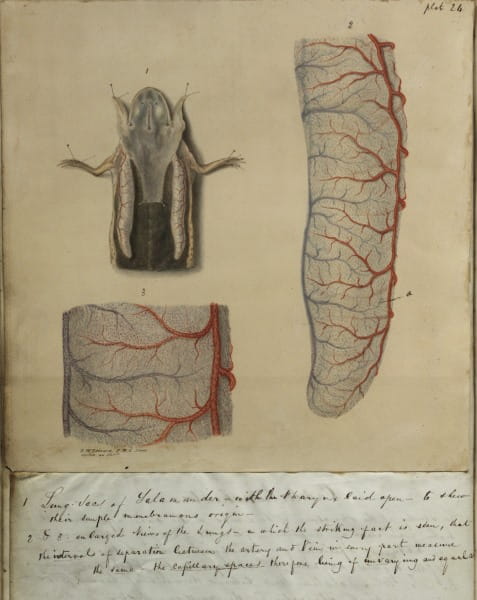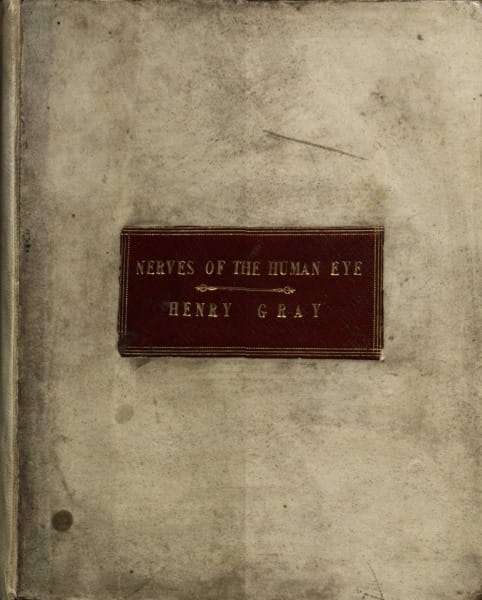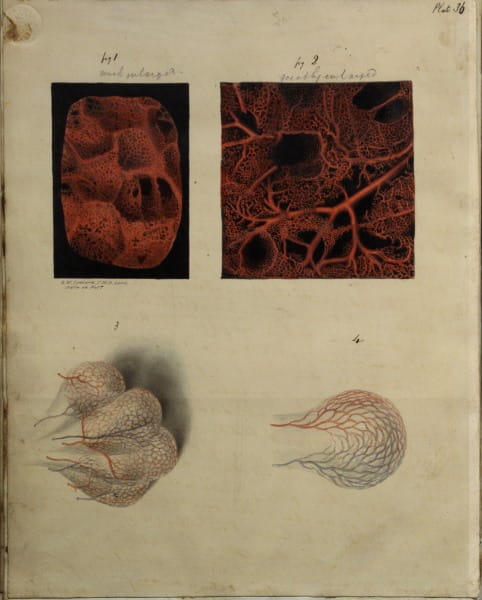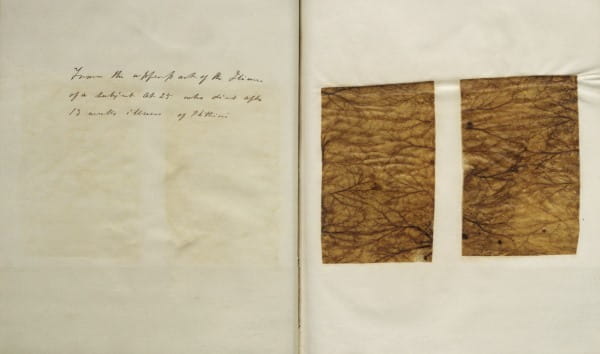Facsimile exhibition: Unusual and exceptional prizes
14 Oct 2016
Sophie Gibbs & Ginny Dawe-Woodings
Our new facsimile exhibition in the display cases on the ground floor reveal some of the College’s historic prize essays. The exhibition will be on view until November. While College prizes are awarded based on the quality of their content, some prize essays also stand out for reasons other than their written text – due either to the beauty or nature of their illustrations, or to the significance of their author.

The essay Nerves of the Human Eye and Its Appendages also features detailed diagrams. This prize-winning essay is exceptional due to the significance of its author: the English anatomist and surgeon Henry Gray. Written 12 years before publishing his famous eponymous textbook Gray’s Anatomy, Gray’s examined the retina and nerves of the human eye this essay to win the Triennial Prize in 1846. Interestingly, despite the title, this work also examines the eyes of both invertebrate and vertebrates such as cephalopods, fish, reptiles, birds and mammals. Gray’s motto “Palmam qui Meruit ferat” [“let whoever earns the palm bear it”] is featured within this essay. On the final page is a message of gratitude to Hunter, Owen and Swan for their dissection preparations in the College museum.
An earlier post describes Samuel Gaskell’s dissertation Ulceration and Suppuration, awarded the Jacksonian Prize in 1837. His dissertation is accompanied by an illustrative volume of 52 “preparations” of human tissue manifesting with ulcers which includes 15 slides of injected blood vessels and 37 pieces of skin.
Sophie Gibbs, Senior Information Assistant & Ginny Dawe-Woodings, Museums & Archives Project Cataloguer



